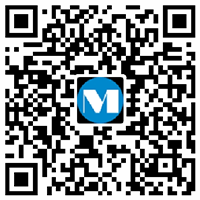
The idea of this module is to (re-)introduce developers to design thinking. They may not want to work as designers, but having some basic user experience and design theory is good for everyone involved in building websites, no matter what their role. At the very least, even the most technical, “non-designer” developer should understand design briefs, why things are designed as they are, and be able to get into the mindset of the user. Web development is a specific field of software engineering that focuses on building web pages. Web pages, or web apps, are codebases that are downloaded and run in our web browser (e.g., Google Chrome) each time a user navigates to the website address.
Modules
Explore top-quality degrees that you can complete at your pace from a world-class university. After you are accepted to the program, the material you complete will count toward your degree coursework. If you want to delve deeper into web app creation, explore the tools to develop a progressive web app. These practices aim to enhance collaboration, reveal and counter issues early, and deliver updates promptly and dependably. The core performance optimization aspects encompass code efficiency, minification and compression, caching, image optimization, lazy loading, and more. A professional content writer who has experience in freelancing and now working as a Technical Content Writer at GUVI.Google Certified Digital Marketer.
- This module also delves into crafting and publishing essential HTML elements such as lists, and teaches the intricacies of writing and nesting HTML tables and their content.
- Thorough testing and debugging processes are essential for identifying and resolving issues in a web application.
- The foundation of web application architecture lies in its core components.
- This approach fosters a comprehensive understanding of CSS as a tool for sophisticated web design and layout management.
- They’re considered “centralized” because everything–the website files, back-end code, and data are stored together on the server.
- Immerse yourself in a focused learning environment, free from distractions, where you can sharpen your skills in popular global destinations.
- There are many certificate courses and training programs offered by leading teachers and professionals in web programming that you can take up.
Module 2 equips students with advanced skills in HTML, focusing on creating, hosting, and accurately indexing links and images to enhance web page functionality and aesthetics. Students will learn how to convert unique characters into UTF8 Unicode, ensuring global compatibility and accessibility. This module also delves into crafting and publishing essential HTML elements such as lists, and teaches the intricacies of writing and nesting HTML tables and their content.
- Web application architecture defines the structure of a web application, ensuring proper interaction between its components.
- For example, you can build a “Back to Top” button that when the user clicks it, they’ll scroll back up to the top of the page.
- Jeel Patel is the Founder of Monocubed and is the main curator & writer of the content found on this site.
- Web development is an excellent career choice for anyone passionate about technology, problem-solving, and innovation.
- With Sass, you can split up your styles into multiple files for better organization, create variables to store colors and fonts, and use mixins and placeholders to easily reuse styles.
Our platform fosters professional growth, delivering personalized learning experiences, expert career coaching, and diverse opportunities to help individuals fulfill their career dreams. Board Infinity has successfully facilitated over 20,000 career transitions, marking a significant impact in the career development landscape. Application Programming Interfaces are sets of rules and protocols that allow different software applications to communicate with each other. APIs define the methods and data formats that applications can use to request and exchange information. This module provides all the CSS fundamentals you’ll need for now, including syntax, features, and techniques.

They enable web applications to handle dynamic content, user data, transactions, and more by providing efficient storage, retrieval, and manipulation capabilities. Database management systems (DBMS) are used to interact with the database, ensuring data integrity, security, and performance. Database management involves organizing, storing, retrieving, and manipulating data within a web application.
With the basics of the CSS language covered, the next CSS topic for you to concentrate on is styling text — one of the most common things you’ll do with CSS. Here we look at fundamentals including setting font, boldness, italics, line and letter spacing, drop shadows, and other text features. We round off the module by looking at applying custom fonts to your page, and styling lists and links.
Now you know how to use HTML, CSS, and JavaScript to create, style, and make interactive web pages.
Single Page Applications (SPAs) load a single HTML page and dynamically update content as users interact with the app. It provide a seamless user experience with faster interactions, as it reduces the need for full-page reloads. SPAs rely heavily on JavaScript frameworks like React, Angular, or Vue.js to manage client-side rendering. While SPAs offer improved performance and a more fluid user experience, they can be challenging for search engine optimization (SEO) and may require additional considerations for accessibility. Despite these challenges, SPAs are ideal for applications with rich user interactions.
The next step is to learn CSS, to set the layout of your web page with beautiful colors, fonts, and much more. Vue is a newer framework created by Evan You, a former Angular developer. While it is smaller in use than React and Angular, it is growing quickly and is also considered easy and fun to use.
For example, a CSS framework like Bootstrap will require us to write our CSS using slightly different rules than regular (vanilla) CSS. But the drawbacks are often worth it, because Bootstrap makes styling our sites far easier and allows us to create mobile-friendly pages with minimal effort. You should come away with a basic understanding of how to think like a computer programmer. Luckily, there are tons of resources available to you where you can keep learning and seek advice. Explore your different options to see which one is most comfortable for you. In simple terms, https://traderoom.info/fundamentals-of-web-application-architecture/ web development includes web designing, development, and maintenance of a website.
Step 1: Determine your web dev specialization#
Sandbox environments are websites designed to allow you to write and immediately run small pieces of code. They are great learning tools for beginners and excellent debugging tools for experts. A killer web developer portfolio is critical for getting jobs in the field. This is the website where you showcase all your hard-earned skills, beautiful designs, and best web projects. We know you’re just starting out, so don’t let this step overwhelm you.
To ensure maximum reach and efficacy, the website must be tested in a variety of contexts and technologies. The website moves to the delivery stage after gaining final approval from the designer. To ensure its preparation for launch, the quality assurance team performs rigorous testing for functionality, compatibility, and performance. In previous modules we looked at how to style and manipulate the boxes that your content sits inside.
How do we execute code?
Web development relies on various tools and technologies to make the process efficient and effective. Let’s take a closer look at the most commonly used tools in the industry. Web development plays a pivotal role in today’s digitally connected world. It’s not just about creating websites, it’s about enabling communication, commerce, education, and so much more. The back end is the backstage crew managing the lighting, sound, and logistics that make the show possible. Let’s explore each side in more detail to understand how they work together to create seamless web experiences.
Web application architecture defines the structure of a web application, ensuring proper interaction between its components. It outlines how data flows, business logic operates, and the user interacts with the application. Companies offering software development services can deliver secure, high-performing web applications by focusing on an optimized architecture.
本站尊重原创,素材来源于网络,好的内容值得分享,如有侵权请及时联系我们给予删除!

 微信扫一扫
微信扫一扫  支付宝扫一扫
支付宝扫一扫 